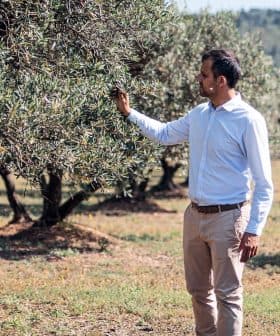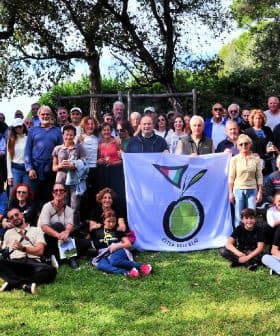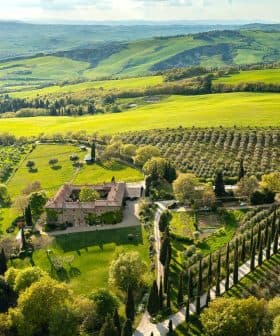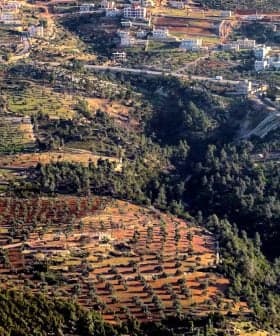Initiative in Italy to Restore Olive Cultivation in The Apennines
The 1,200-kilometer mountain chain is home to 207,000 hectares of abandoned olive groves which could substantially increase Italian olive oil production.
 Castelmezzano village in Apennines Dolomiti Lucane. Basilicata, Italy
Castelmezzano village in Apennines Dolomiti Lucane. Basilicata, Italy  5.1K reads
5.1K readsRestoring 5,000 hectares of olive orchards in the Italian Apennine Mountains could lead to a 40 percent increase in regional annual olive oil production, according to the Italian National Olive Tree and Olive Oil Academy. Despite challenges such as labor shortages and the trend of abandoned olive groves, there are initiatives and funding plans to support the revitalization of olive farming in the region and attract younger generations to rural areas.
Twenty-five thousand hectares of olive groves located on the slopes of the Italian Apennine Mountains could be restored to production in a matter of years, reversing a long-running trend of abandonment.
According to the Italian National Olive Tree and Olive Oil Academy, restoring 5,000 hectares of olive orchards in a mountainous region such as Abruzzo could foster a 40 percent increase in regional annual olive oil production.
Much of the agriculture in the Apennines can be restored, improved and made more productive, and production costs could be lowered.
The relatively low mountain range, which spans more than 1,200 kilometers, is home to 207,000 hectares of olive groves. They represent approximately 21 percent of Italy’s olive cultivation surface area.
During a recent national meeting in Casoli, Abruzzo, hundreds of experts, researchers, professors, agronomists, economists, entrepreneurs and public officials focused on reviving the Apennine olive growing tradition.
See Also:Thousands of Hectares of Abandoned Olive Groves Set to Be Sold in ItalyGiven the high volumes of olive oil consumption in Italy and the trend of shrinking Italian olive oil production, the academy noted how significant such an initiative could be.
According to the International Olive Council, Italy will consume more than 486,000 tons of olive oil in the 2022/23 crop year, more than any other country. However, national production only reached 235,000 tons in the last season.
Academy data showed that in 2022, Italian olive oil production accounted for less than 48 percent of domestic consumption, lower than any previous record. The shrinking yields also affect the national olive oil trade balance, as imports exceeded €2.2 billion while exports reached €1.9 billion.
“Much of the agriculture in the Apennines can be restored, improved and made more productive, and production costs could be lowered,” Riccardo Gucci, professor for the agriscience department at the University of Pisa and the academy’s president, told Olive Oil Times.
“That can happen, and it is already happening in some areas, where public initiatives sustain the development of olive farms and the strengthening of the existing ones,” he added. “Not all the traditional olive growing in those areas can be recovered. Still, a part of it might improve.”
Elena Sico, director of Abruzzo’s regional agriculture department, said during the meeting that new funds are being planned to sustain the further development of existing farms. European and regional funds are focused on upgrading olive mills and improving storage and bottling operations.
“We raised public funding to 65 percent for those operations,” she said. “We are also waiting for the go-ahead from the national Ministry [of Agriculture] to support up to 80 percent of their investments in the younger operators starting their activity,” she said.
However, challenges abound. “Many olive orchards in the rural areas of the Apennines are not cultivated by farms or companies. Most of the time, it is local families owning small or very small olive groves,” Gucci said.
“That also means that those family orchards, which might need costly restoring operations, fall outside the scope of the development programs, which are meant to sustain companies, not families,” he added.
While many local administrations in the last decades have deployed public tenders and funds to encourage more young olive farmers to start businesses, the measures have not stopped the trend of abandoned olive groves.
“Even generous initiatives such as giving away large pieces of agricultural land to young farmers wishing to install in the rural villages were not significantly successful,” Gucci said.
According to Gucci, the labor shortage impacting the Italian agricultural sector demonstrates that different areas of opportunity often attract the younger generations.
“It is not just a question of economics,” he said. “It also depends on the social context; sometimes they shun fatigue-intensive activities; they look for freedom.”
See Also:Rehabilitating Olive Trees in Aragón to Stem Spain’s Rural ExodusAs the number of residents in most of the Apennines continued to fall over the last few decades, the presence of territorial services and local institutions decreased, which led to further abandonment of those areas by the younger generations.
To reverse that, Gucci envisioned a new approach to rural areas often burdened by old infrastructures.
“How can you ask young farmers to change their lives and invest in rural areas where they do not have an internet connection, where they would not know how to get their kids to school, where there are no opportunities for intense social interaction?” Gucci asked.
He said plenty could be done to help rural areas decongest cities and improve the quality of life of many.
“There are so many companies and professionals working remotely nowadays; think of a mechanical engineer or a programmer who does not need to go to a company campus in the city every day,” Gucci said. “Just like young farmers, they could see the opportunity to improve the quality of their lives in revamped and modernized villages.”
He noted how research centers and universities do not need large cities. “Universities are increasingly locating their campuses in areas that need to be regenerated, such as abandoned industrial areas,” Gucci said. “They could also be part of a different approach to rural areas 50 or 100 kilometers away from the city.”
Gucci stressed how even minor reforms could provide a relevant outcome. “For instance, we could provide a dedicated tax regime to olive orchard owners who are not a company, not a farm, but take care or could take care of their land,” he said.
According to Gucci, these olive tree owners in the Apennines should be able to deduct the costs of maintaining an olive tree terrace in their fields from their taxes.
“Such deductions are already provided for a number of upgrades that can be done to houses, such as installing a more sustainable central heating unit,” he said. “But we do not have anything like that yet if one maintains dry walls or terraces for olive trees.”
“That would sustain the maintenance operations, stimulate the local economy by giving new opportunities to small repair companies, and in the long run, would even mean more taxes for the state,” he added.
According to Gucci, the future of olive farming and agriculture in the Apennines requires investment in local infrastructure and incentives to keep agricultural land in a productive state.
“Today, it is possible to bring back population in significant numbers in those villages, where the quality of life would immediately improve,” he said. “It does not mean pursuing a bucolic idea of agriculture deprived of modern infrastructures.”
“We cannot consider the long-standing tradition of olive growing in those hills and mountains as we always did,” Gucci concluded. “Today, it is completely up to the individual to assume all the costs and risks of maintaining that tradition alive. This means to cultivate the past and at the same time to be confined in awkward backwardness.”
Share this article









